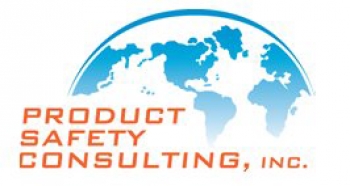Conductors should be of an appropriate size for the application, and should pass through openings with no sharp edges with sufficient clearance to prevent fraying or damage. If they are accessible to the user of the product, they must be tested to withstand a certain amount of “strain” (for more on strain relief, see below). Finally you can never cross low voltage and high voltage conductors unless the low voltage wiring is rated for the higher voltage. For example, a wire carrying 12 volts may be in contact with a wire carrying 120 volts so long as it is rated for 120 volts itself.

EU Construction Products Regulation
By Dan Arnold, Sales Engineer
Product Safety Consulting Inc.
We hear from numerous manufacturers currently precluded from selling in the EU because their products are not CE marked. This is especially true of construction products, which are often sold under large contracts that specify CE marking. Construction products are a good example of a well-established Directive being transitioned to a Regulation, which we covered in a previous article. Construction Products Directive 89/106/EEC (CPD) was fully replaced by Construction Products Regulation 305/2011/EU (CPR) on 1 July 2013. The CPR has several interesting differences from the more common Directives and Regulations used for electrical products.
Instead of the more familiar Declaration of Conformity (DoC), the CPR requires a Declaration of Performance (DoP). Although basic information of DoC and DoP is the same, the DoP requires a declared performance level of essential characteristics. One example characteristic is compressive strength for some structural products. The essential characteristics are an important CPR concept and are in the harmonized standards for each construction product type or family. The performance levels of essential characteristics are intuitive for construction products, which must have physical integrity to function as intended over many years. Performance to at least one essential characteristic must be declared, but to be competitive and comply with the intent of harmonized standards, multiple characteristics are likely.
Another important attribute of the CPR are the Assessment and Verification of Constancy of Performance systems (AVCP systems). The AVCP is a surveillance mechanism to ensure the declared performance of essential characteristics is maintained. Each essential characteristic specified in a harmonized standard will have one of these AVCP system numbers assigned: 1+, 1, 2+, 3 or 4, from most to least comprehensive. System 1+ requires the manufacturer to maintain Factory Production Control (FPC) and periodically test samples. It also requires a Notified Body to assess product performance, initially inspect the manufacturing plant and FPC, periodically assess the FPC, and audit test the product. Conversely, AVCP system 4 only requires the manufacturer to assess performance and maintain FPC.
CE marking can be arduous for some construction products, but the legislation and compliance scheme is well established and generally intuitive, given the critical function of these products. Product Safety Consulting can help manufacturers understand the requirements and achieve CE compliance.
References:
https://ec.europa.eu/growth/sectors/construction/product-regulation_en
Compliance Tip: Designating the Correct Driver Can Save Time and Money
LED Drivers have always been in the Recognized Component program at UL. One problem is being able to use multiple suppliers of Drivers without having temperature testing being repeated. UL was proactive in this regard and has introduced the TL program for Drivers. Get your Luminaire Listed with a TL rated Driver and get alternate Drivers added with no additional temperature testing. Your UL descriptive report still needs to be updated, but getting out of temperature testing speeds up the process. Talk to your suppliers or look in UL’s Category “FKSZ2” to find Drivers with a TL rating. Pick the hottest one your Luminaire can handle and adding lower rated TL Drivers is paperwork.

